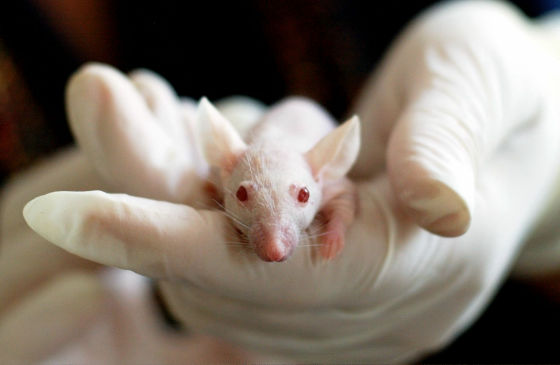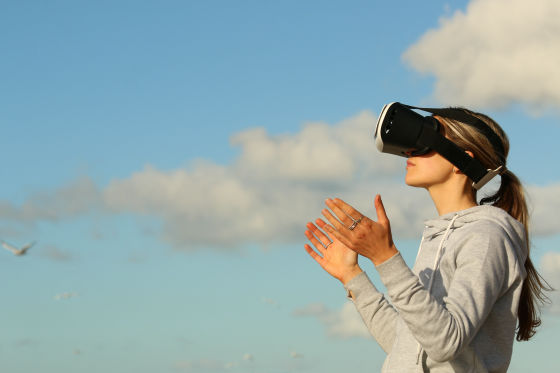Why is it important for science to 'make the VR experience a mouse'?

Virtual reality (VR) technology has developed significantly in recent years, and the gaming and pornography industries are paying great attention as it brings an unprecedented video experience. However, in the development of science, as VR has a very significant meaning, the importance of "making a VR experience a mouse" is explained.
The mouse in the video game
https://www.nature.com/articles/d41586-019-00791-w
VR was used in scientific research for animals in the early 2000s. Since it is necessary to embed electrodes in order to observe the activity of the animal's brain, it has been a difficult task to find out what is happening in the moving animal's brain. However, after VR, if animals with fixed head and free movement of limbs are allowed to experience VR, can it be mistaken for animals as “moving freely”? It came to be considered.
In particular, researchers focused on using VR experiments to observe the same mammalian brain as humans, such as mice. The research team at the Princeton University neuroscientist David Tank and others created the mainstream of modern VR experiments to observe the brain. It is said that animals use cells of the hippocampus and its surrounding area to grasp their position in space, but the VR simulator developed by Tank et al. Studied this area.
Originally Tank made the rat which embedded the electrode in the brain act freely in the fence, and developed the system which records what kind of fire is happening in the brain cells. Although this system was so promising that it could receive the Nobel Prize in the field of physiology and pharmacy, Tank wanted a system that could investigate the firing of neurons further with the electrodes in the cells. Since this system needed to fix the mouse's brain, a VR system was developed to simulate the feeling that "I am moving" in animals with the cooperation of Chris Harvey of Harvard Medical School. In Only in 2009 was it possible to show what was happening in the hippocampus during visual navigation.

by tiburi
And in 2010, experiments with mice showed historical research results. Much of the research in the 20th century was to stimulate mice under anesthesia and measure how the brain responds to the stimuli. However, in a 2010 study , when a mouse with a fixed head and controlled vision was run on a ball, a moving mouse would have twice as many firings of visual neurons as a stationary mouse. Was indicated. This is a result showing that brain activity including "the perception area of the brain that responds to the external world" changes depending on the "behavior" of the animal. The results of this research have significantly changed the way scientific research has progressed.
After the research results in 2010 and the development of the VR system, the number of animal experiments and research papers using VR increased rapidly thereafter. However, it is said that it is very difficult to determine how animals experience the virtual world.

by Bradley Hook
For example, when a human plays a racing car game, the player is aware that it is not a real race, but the brain performs visual processing as if driving in the real world. Similarly, changes in activity in the mouse's brain may not necessarily occur because the mouse recognizes it as "moving." In addition, when the VR image is shown, the movement of the mouse is synchronized with the image, but it is still doubtful how information such as smell, sound and sense of passing through the beard are related to the information processing of the mouse. Furthermore, by fixing the head, I do not know how the signal of the movement or balance of the head that occurs in the real world does not occur. These problems hamper the understanding of how hippocampal navigation systems produce animal position awareness.
“A rat who explored on the 2D VR system and a rat who walked in the real world have hippocampal neurons in the same environment, even though the rats explored on the 2D VR system,” said Mayank Mehta, a neuroscientist at the University of California Los Angeles in 2015 "The ignition of the different" announced the research results . In the real world, changes in touch, smell and hearing occur simultaneously, and the rat can move the head and body naturally, so what happens in the navigation system of the brain is different from what happens in the simulation world, Mehta says It is a conclusion. However, Mr. Mehta has not lost interest in the VR system, and believes that the development of a "VR system that allows the mouse to move its head more naturally" can reproduce a response closer to the real world.
The strength of VR lies in its ability to operate the environment freely. Theoretically, it is also possible to find out what kind of reaction occurs in the brain when animals drift in the universe. This is the point that researchers have long wanted to know.

by qimono
And what do researchers say to the human and other animals that the VR experiments on mice reveal? We are also investigating about that. Elizabeth Buffalo from the University of Washington, as with the mouse, does the hippocampus of the primate fire neurons in specific locations by stimulation of the VR? I 'm investigating . In this study, monkeys use a joystick to explore the Y-maze and later test whether they remember the route. According to the experiment, Buffalo is examining the relationship between "memory" and "hippocampal spatial expression". "What I like about VR is the abundance of action tasks. VR gives us new questions," says Buffalo.
According to David Schneider, a neuroscientist at the University of New York, for scientists, it has been a longstanding mystery how neurons that transmit sensory stimuli fire in response to vision, sounds, smells and textures. However, with the help of VR technology, many scientists today recognize that "neurons in the sensory area represent both the" perceived world "and" animal behavior ".
As of 2019, some researchers have developed head-mounted camera systems that track mouse head and eye movements. Researchers predict that with this technology, more detailed observations will be possible, and memory and attention points will be shown to affect the initial sensory processing performed by the mouse brain. It is. If technology evolves in the future, it may be possible to observe mouse brain activity without using a VR system, but as of 2019, research using VR is considered to be very “fruitful” It has become.
Related Posts:







